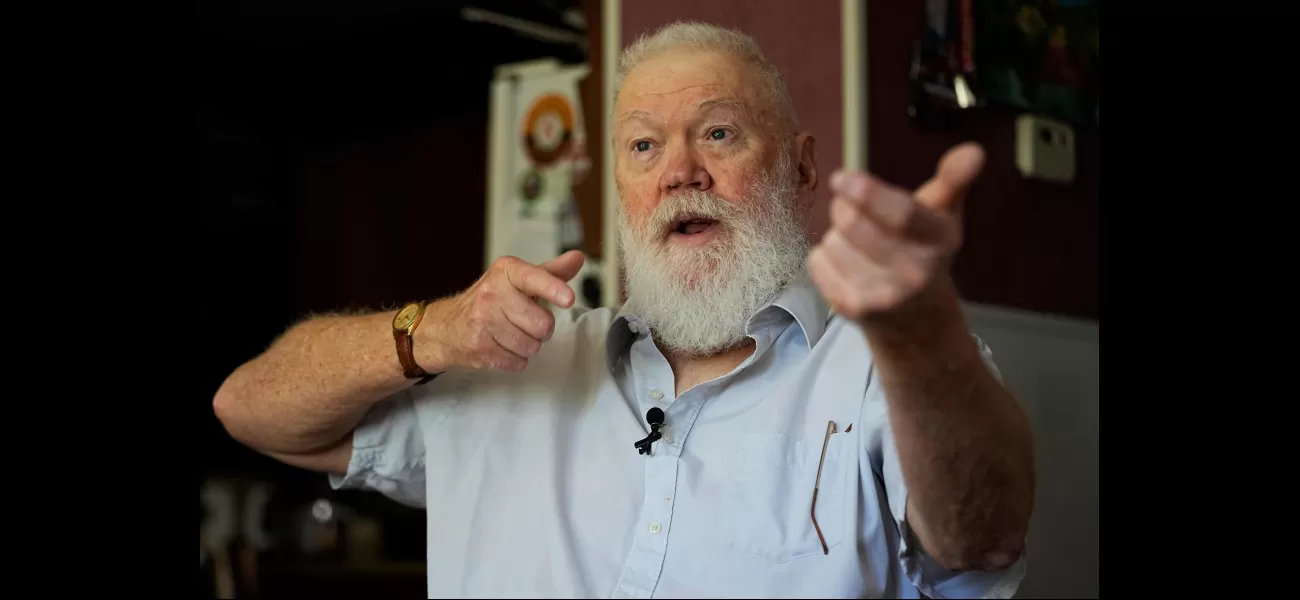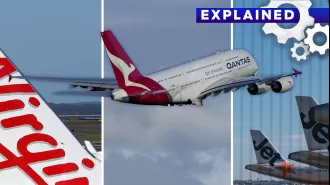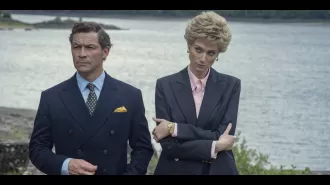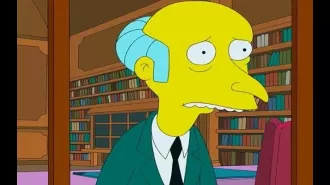In 1970, soldiers shot at students at Kent State University. Those who survived can relate to current campus demonstrations.
A pivotal event in American history, the end of the 1960s was marked by a series of violent protests on college campuses, resulting in temporary closures of many schools.
May 4th 2024.

Dean Kahler was a freshman at Kent State University when the unthinkable happened. The Ohio National Guard, who were supposed to protect and serve, turned their guns on unarmed war protesters, including Kahler. As the bullets flew, Kahler quickly flung himself to the ground and covered his head. But despite his efforts to protect himself, he couldn't escape the danger. M1 rifle rounds were hitting the ground all around him, and then, he felt a sharp pain. "And then I got hit," Kahler recalled, more than 50 years later. "It felt like a bee sting." But it was far worse than that. A bullet had gone through his lung, shattered three vertebrae, and damaged his spinal cord, leaving him paralyzed.
Tragically, four students at Kent State lost their lives that day, and Kahler was among eight others who were injured. It was a shocking and violent event, one that would go down in history as a turning point in the U.S. The 1960s had been a tumultuous time, and the shootings at Kent State only added to the turmoil. It sparked nationwide campus protests and led to the temporary shutdown of hundreds of colleges and universities.
Today, the shootings at Kent State are still relevant, as students once again take to the streets to protest a far-off war. College administrators are faced with the challenge of balancing free-speech rights with maintaining order, and the public is bombarded with images of chaotic confrontations. As Kent State prepares for their annual commemoration of the event, Kahler, now living outside of Canton, Ohio, reflects on the current state of college campuses and wonders if the mistakes of the past are being repeated.
He questions whether college administrators and trustees have truly learned from the events of the 1970s. "I think they're being a little heavy-handed, a little over the top," he says. And he's not alone in his concerns. Across the country, more than 2,400 people have been arrested at dozens of colleges and universities for participating in protests against the Israel-Hamas war. Police have used tear gas, riot gear, and arrests to break up demonstrations, causing a sense of unease and tension on campuses.
But at Kent State, the approach has been different. The university has a long history of promoting civil dialogue and embracing freedom of speech. They understand the dangers of polarized conversations and attitudes, and strive to create a safe space for open discussions. For example, they invited students from opposing sides of the Gaza war to share their perspectives and engage in peaceful dialogue.
However, even at Kent State, there is an undercurrent of tension, and some students don't feel safe. Junior Adriana Gasiewski, who has covered the protests for the school newspaper, worries about the potential for violence, especially at schools like Columbia University, where tensions have escalated and police have clashed with demonstrators. There has even been talk of deploying the National Guard to Columbia, a fear that Gasiewski shares. "My biggest fear is ... they bring the National Guard to Columbia and that it's like history repeating itself with May 4," she says.
The events of the past and present are eerily similar. Temple University historian Ralph Young, who authored "American Patriots: A Short History of Dissent," sees clear parallels between the Vietnam war protests and the current demonstrations against the war in Gaza. He believes that the crackdowns and use of force by authorities will only fuel the protests and spread them to other campuses.
History seems to be repeating itself in other ways as well. Just as in 1970, when Ohio Governor James Rhodes blamed external groups for the violence at Kent State, today, New York City Mayor Eric Adams has accused "outside agitators" of inciting anti-Semitic protests. But as Kent State journalism teacher and survivor Chic Canfora points out, it's unfair to paint all protesters with the same brush. "I think that all university campuses should get together and figure out how to allow students to be what students have historically been, the conscience of America," she says.
Ultimately, the hope is that these protests will not end in tragedy like the shootings at Kent State. Emerson College scholar and Kent State expert Gregory Payne believes that this era will have its defining characteristics, just as the 1960s and '70s did. But he hopes that it will not be marked by death and bloodshed. "My hope is that there is not death and bloodshed like we saw in Kent State," he says. As Kent State prepares to commemorate the events of May 4, 1970, the echoes of the past continue to reverberate, serving as a reminder of the importance of peaceful protest and open dialogue on college campuses.
Tragically, four students at Kent State lost their lives that day, and Kahler was among eight others who were injured. It was a shocking and violent event, one that would go down in history as a turning point in the U.S. The 1960s had been a tumultuous time, and the shootings at Kent State only added to the turmoil. It sparked nationwide campus protests and led to the temporary shutdown of hundreds of colleges and universities.
Today, the shootings at Kent State are still relevant, as students once again take to the streets to protest a far-off war. College administrators are faced with the challenge of balancing free-speech rights with maintaining order, and the public is bombarded with images of chaotic confrontations. As Kent State prepares for their annual commemoration of the event, Kahler, now living outside of Canton, Ohio, reflects on the current state of college campuses and wonders if the mistakes of the past are being repeated.
He questions whether college administrators and trustees have truly learned from the events of the 1970s. "I think they're being a little heavy-handed, a little over the top," he says. And he's not alone in his concerns. Across the country, more than 2,400 people have been arrested at dozens of colleges and universities for participating in protests against the Israel-Hamas war. Police have used tear gas, riot gear, and arrests to break up demonstrations, causing a sense of unease and tension on campuses.
But at Kent State, the approach has been different. The university has a long history of promoting civil dialogue and embracing freedom of speech. They understand the dangers of polarized conversations and attitudes, and strive to create a safe space for open discussions. For example, they invited students from opposing sides of the Gaza war to share their perspectives and engage in peaceful dialogue.
However, even at Kent State, there is an undercurrent of tension, and some students don't feel safe. Junior Adriana Gasiewski, who has covered the protests for the school newspaper, worries about the potential for violence, especially at schools like Columbia University, where tensions have escalated and police have clashed with demonstrators. There has even been talk of deploying the National Guard to Columbia, a fear that Gasiewski shares. "My biggest fear is ... they bring the National Guard to Columbia and that it's like history repeating itself with May 4," she says.
The events of the past and present are eerily similar. Temple University historian Ralph Young, who authored "American Patriots: A Short History of Dissent," sees clear parallels between the Vietnam war protests and the current demonstrations against the war in Gaza. He believes that the crackdowns and use of force by authorities will only fuel the protests and spread them to other campuses.
History seems to be repeating itself in other ways as well. Just as in 1970, when Ohio Governor James Rhodes blamed external groups for the violence at Kent State, today, New York City Mayor Eric Adams has accused "outside agitators" of inciting anti-Semitic protests. But as Kent State journalism teacher and survivor Chic Canfora points out, it's unfair to paint all protesters with the same brush. "I think that all university campuses should get together and figure out how to allow students to be what students have historically been, the conscience of America," she says.
Ultimately, the hope is that these protests will not end in tragedy like the shootings at Kent State. Emerson College scholar and Kent State expert Gregory Payne believes that this era will have its defining characteristics, just as the 1960s and '70s did. But he hopes that it will not be marked by death and bloodshed. "My hope is that there is not death and bloodshed like we saw in Kent State," he says. As Kent State prepares to commemorate the events of May 4, 1970, the echoes of the past continue to reverberate, serving as a reminder of the importance of peaceful protest and open dialogue on college campuses.
[This article has been trending online recently and has been generated with AI. Your feed is customized.]
[Generative AI is experimental.]
0
0
Submit Comment





